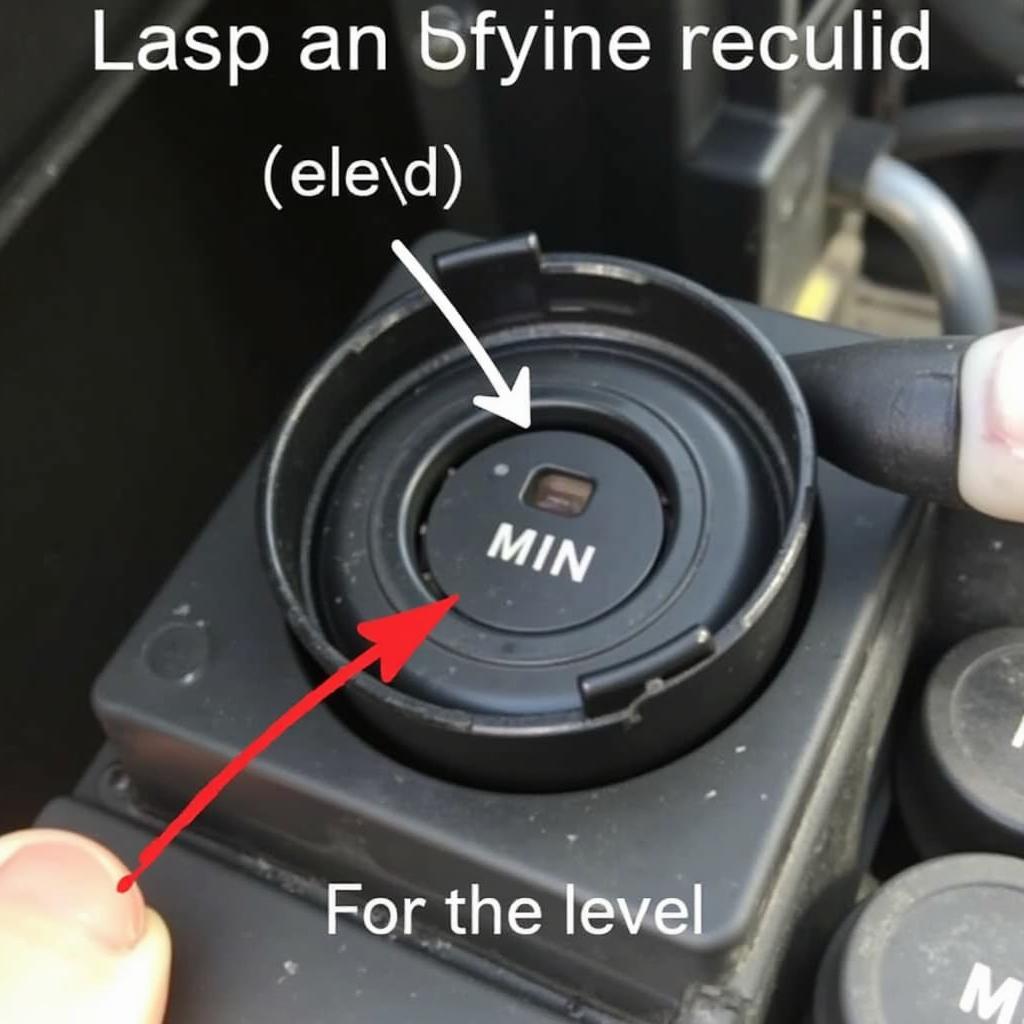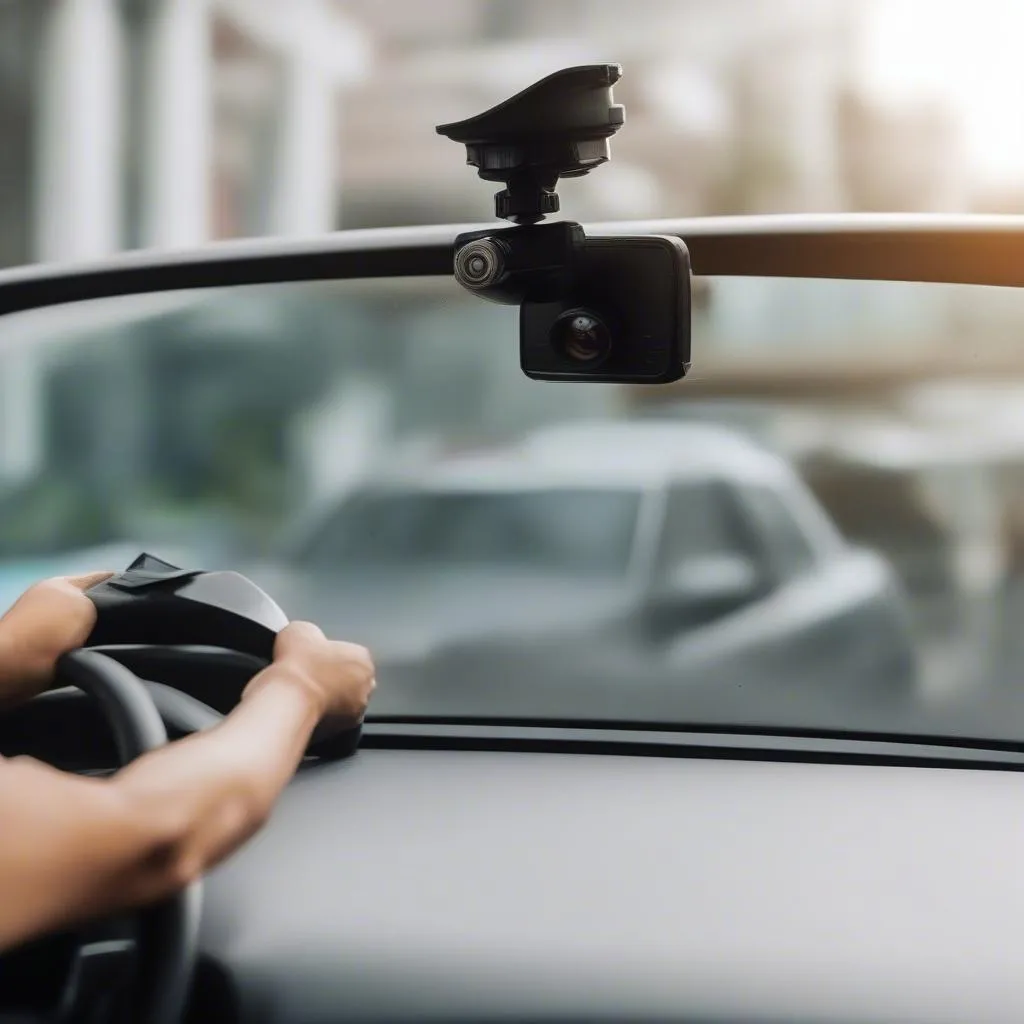The brake warning light on your dashboard is a vital safety feature, and when it illuminates in your 2004 Hyundai Santa Fe, it’s crucial to take immediate action. While a simple issue like a low brake fluid level can trigger the light, it could also indicate a more serious problem within your braking system. This comprehensive guide will delve into the common causes of a brake warning light on a 2004 Hyundai Santa Fe and provide potential solutions to get you back on the road safely.
Understanding Your Brake Warning Light
Your 2004 Hyundai Santa Fe’s brake warning light serves as a primary indicator of potential issues within your braking system. It’s designed to illuminate when your vehicle’s computer detects a problem. However, it’s important to note that this light can also turn on during vehicle startup as a system check. If the light turns off after a few seconds, it indicates that the system is functioning correctly.
If the brake warning light stays on or illuminates while driving, it signifies a problem that needs your immediate attention.
Common Causes of a 2004 Hyundai Santa Fe Brake Warning Light
Several factors can trigger the brake warning light on your 2004 Hyundai Santa Fe. Identifying the root cause is crucial for effective troubleshooting. Here are some of the most common culprits:
1. Low Brake Fluid Level
The most common reason for the brake warning light to illuminate is a low brake fluid level. Your brake system relies on hydraulic pressure to function correctly, and brake fluid is the lifeblood of this system.
Troubleshooting Tip:
- Check the brake fluid level in the reservoir under the hood. If it’s below the minimum mark, add the appropriate DOT 3 or DOT 4 brake fluid as recommended in your owner’s manual.
 Low Brake Fluid Reservoir
Low Brake Fluid Reservoir
2. Worn Brake Pads
Your brake pads are designed to wear down over time. When they become too thin, a sensor within the brake pad will make contact with the rotor, triggering the brake warning light. This is a crucial safety feature to alert you that your brakes need attention.
Troubleshooting Tip:
- Have your brake pads inspected by a qualified mechanic. If they are worn beyond the recommended thickness, they will need to be replaced.
 Worn Brake Pads Comparison
Worn Brake Pads Comparison
3. Faulty Brake Light Switch
The brake light switch is responsible for activating your brake lights when you press the brake pedal. A malfunctioning switch can disrupt the signal to the brake warning light, causing it to illuminate.
Troubleshooting Tip:
- Check if your brake lights are working. If they are not, it’s likely the brake light switch needs replacement.
4. ABS Issues
The Anti-lock Braking System (ABS) in your 2004 Hyundai Santa Fe plays a crucial role in preventing wheel lockup during hard braking. If the ABS module or a wheel speed sensor malfunctions, it can trigger the brake warning light.
Troubleshooting Tip:
- Diagnosing ABS issues typically requires a professional-grade OBD scanner. It’s recommended to have your vehicle checked by a qualified mechanic to diagnose and repair any ABS-related problems.
5. Faulty Brake Caliper
The brake caliper houses the brake pads and pistons that apply pressure to the rotor, slowing down your vehicle. A seized or sticking caliper can cause uneven brake pad wear and potentially trigger the brake warning light.
Troubleshooting Tip:
- Inspect the brake calipers for signs of leaking fluid, rust, or damage. A professional mechanic can determine if a caliper needs to be rebuilt or replaced.
Getting Back on the Road Safely
Addressing a brake warning light promptly is essential for your safety and the safety of others on the road. While some causes, like low brake fluid, might seem like simple fixes, it’s crucial to approach them with caution.
Expert Insight:
“Ignoring a brake warning light is like playing Russian roulette with your safety,” says John Davis, a veteran automotive technician with over 20 years of experience. “Brakes are your vehicle’s most important safety system, and even seemingly minor issues can escalate quickly if left unaddressed.”
If you’re unsure about diagnosing or repairing any brake-related issues, it’s always best to err on the side of caution and consult a qualified mechanic. They have the expertise and tools to diagnose and fix the problem effectively, ensuring your vehicle is safe to drive.
Conclusion
A glowing brake warning light in your 2004 Hyundai Santa Fe should never be ignored. By understanding the common causes and potential solutions outlined in this guide, you can take the appropriate steps to address the issue promptly and safely. Remember, your brakes are paramount to your safety, so prioritize their maintenance and address any warning signs immediately to ensure worry-free driving.


